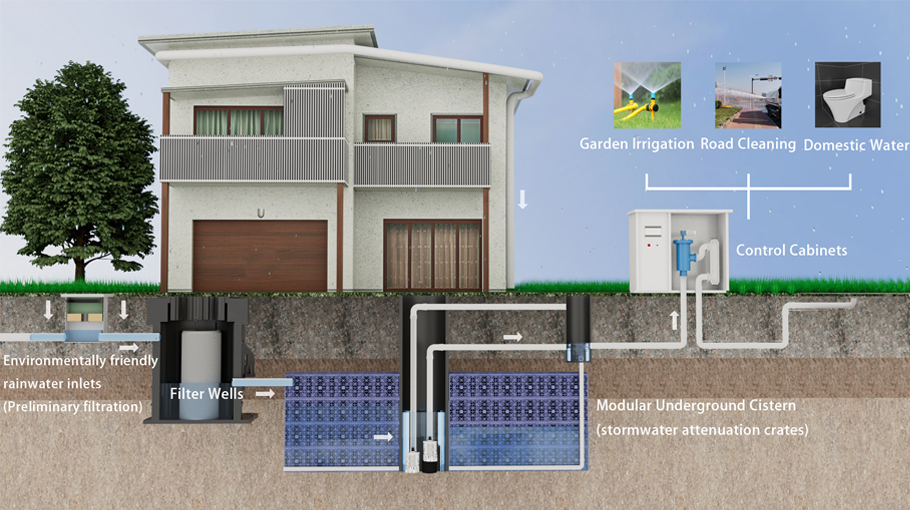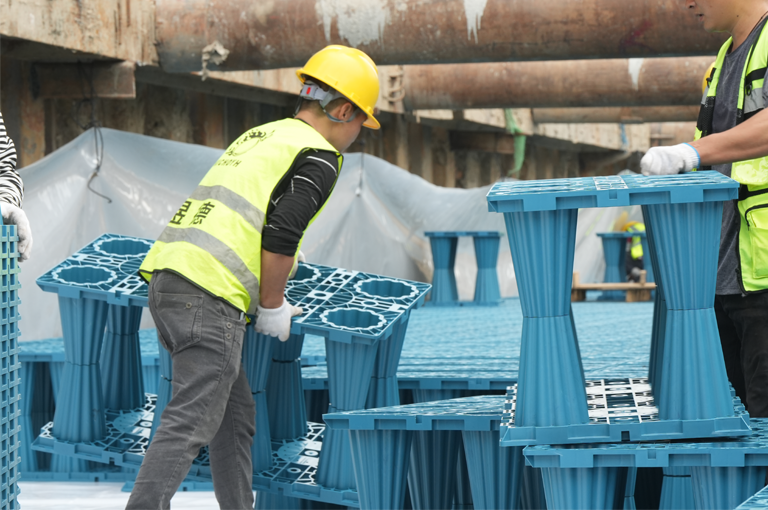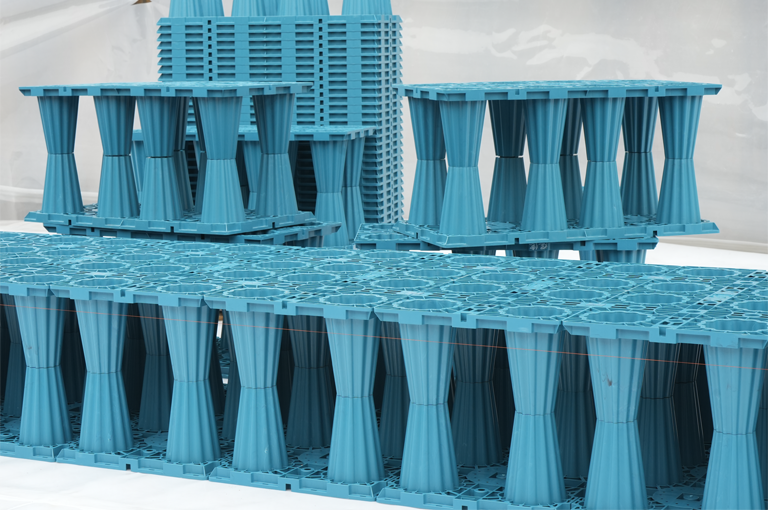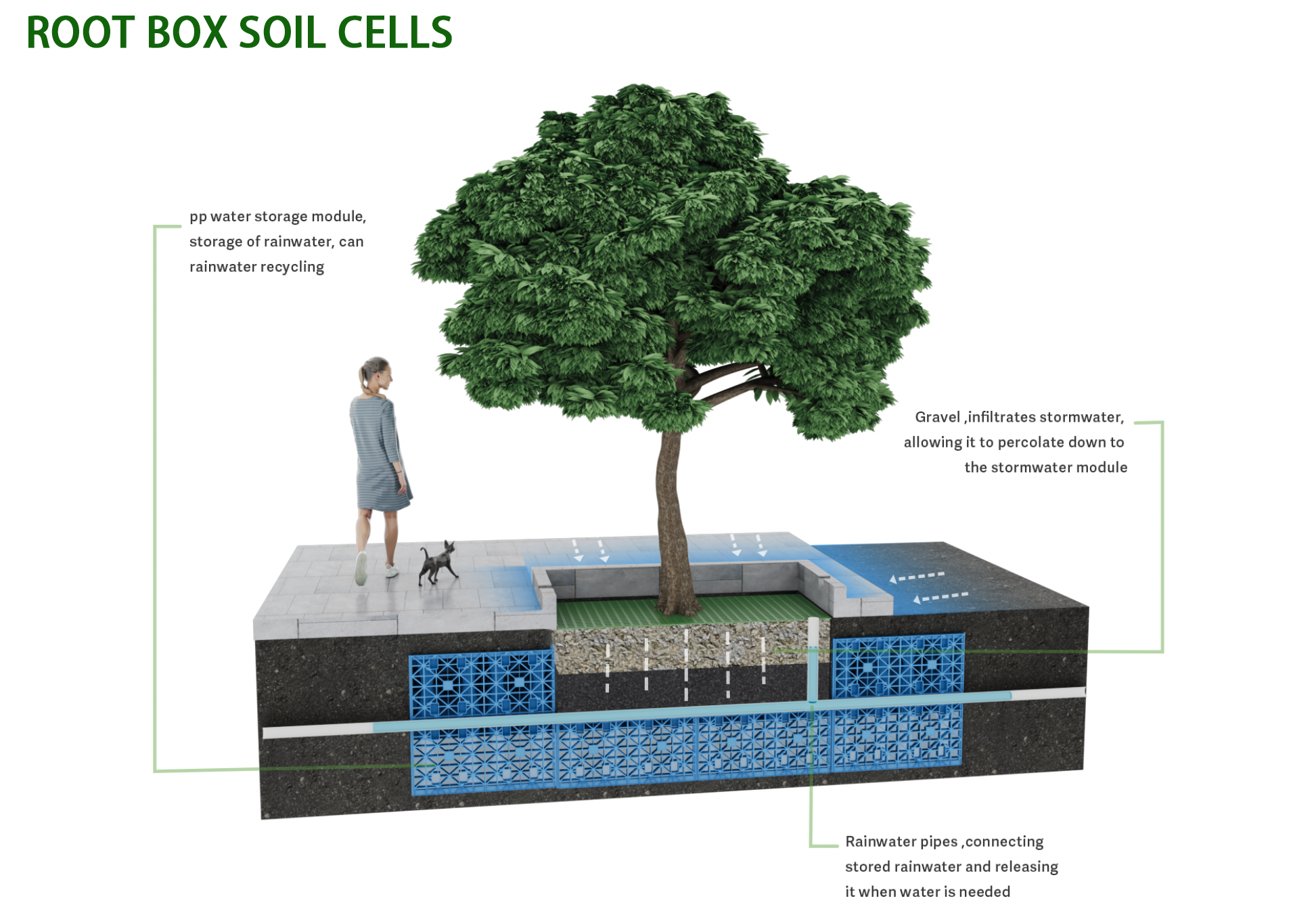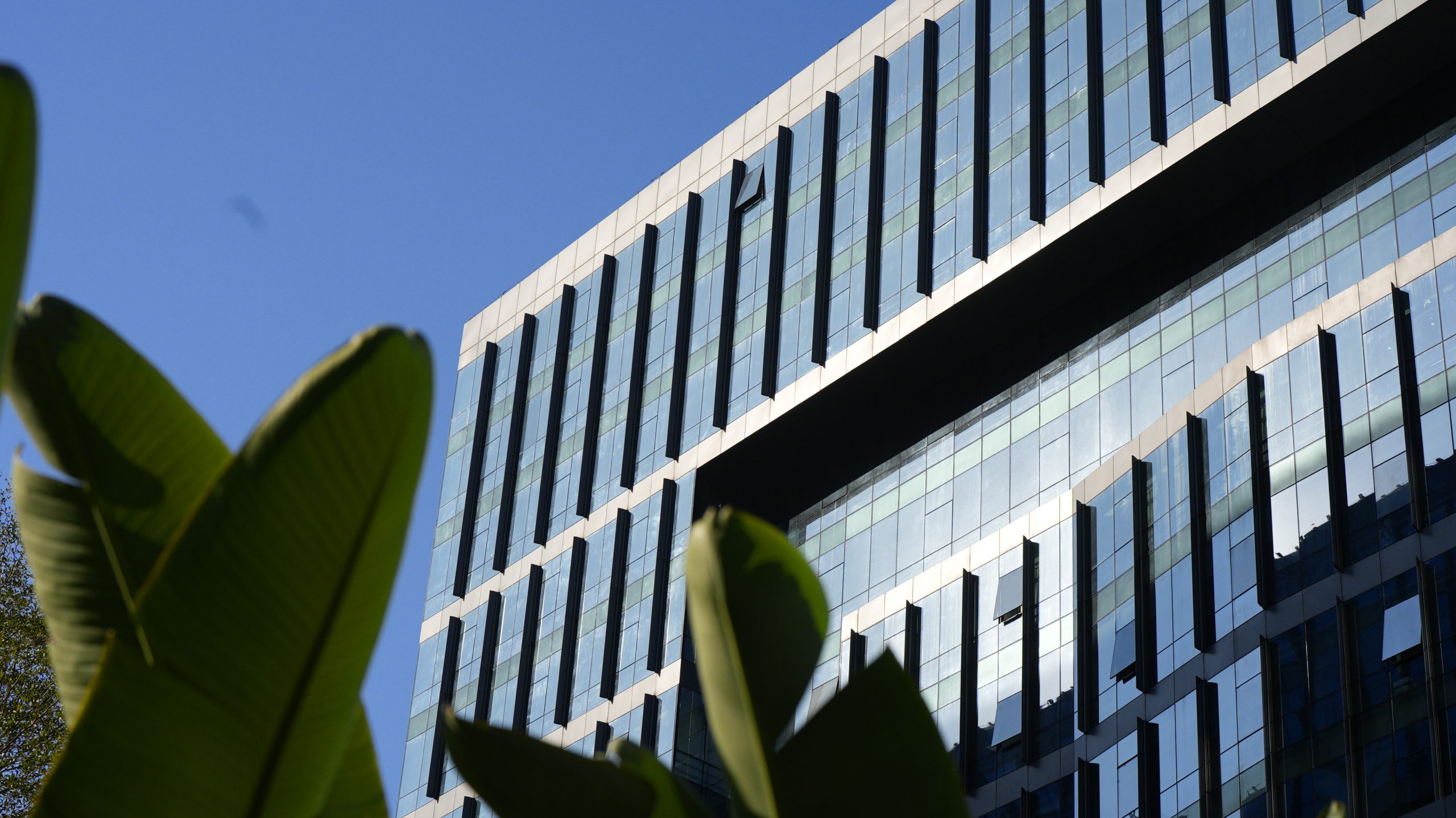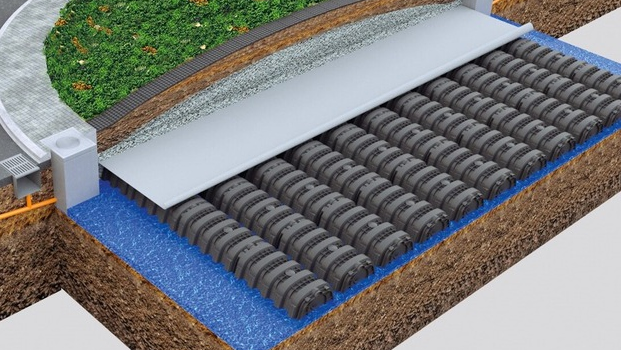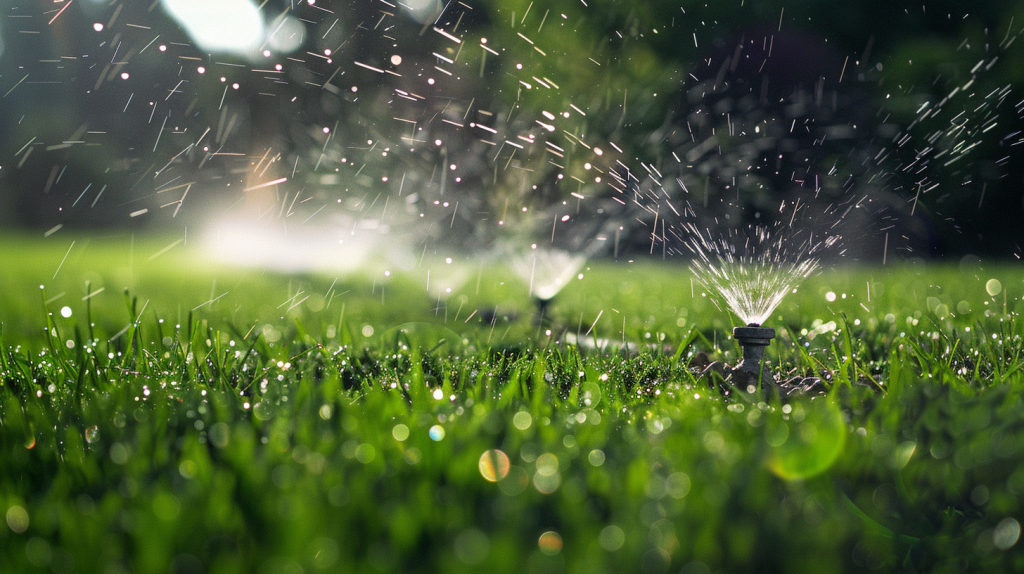In today’s rapidly urbanizing world, effective stormwater management is crucial for both commercial and residential areas. The increasing frequency of heavy rainfall events and the subsequent risk of flooding necessitate robust rainwater harvesting solutions. This article explores the key differences between commercial and residential rainwater harvesting, the concept of underground rain harvesting systems, and the common components like underground cisterns and infiltration systems.
Different of Commercial Rainwater Harvesting and Residential Rainwater Harvesting Solutions
Commercial and residential rainwater harvesting systems are designed to cater to different needs and scales.
1.1 Commercial Rainwater Harvesting Solutions
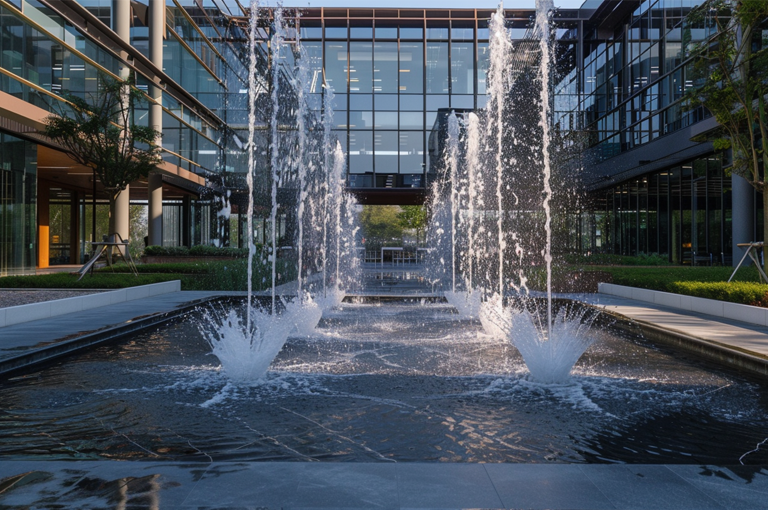
1.1.1 Scale and Complexity of Commercial Rainwater Harvesting
Commercial rainwater harvesting systems are typically larger and more complex than their residential counterparts. They are designed to handle significant volumes of water, which is essential for industrial complexes, office buildings, and large retail establishments. These systems often incorporate extensive infrastructure, including large storage tanks, advanced filtration units, and sophisticated distribution networks to manage water efficiently.
1.1.2 Uses and Applications of Commercial Rainwater Harvesting
The primary focus of commercial rainwater harvesting is to reduce the strain on municipal water supplies and manage stormwater runoff. The harvested water is primarily used for non-potable applications such as irrigation, cooling systems, and toilet flushing. By doing so, commercial entities can significantly lower their water bills and contribute to environmental sustainability.
1.2 Residential Rainwater Harvesting Solutions

1.2.1 Simplicity and Affordability of Residential Rainwater Harvesting
Residential rainwater harvesting systems are designed to be smaller and more straightforward, catering to the needs of individual households. These systems typically consist of rooftop catchment areas, gutters, downspouts, and storage tanks or barrels. The initial investment in residential systems is lower than that of commercial systems, making them an affordable option for homeowners.
1.2.2 Benefits and Applications of Residential Rainwater Harvesting
Residential systems aim to provide an alternative water source for various household needs, including gardening, laundry, and toilet flushing. This not only helps in reducing household water bills but also conserves potable water. The simplicity and effectiveness of residential systems make them a popular choice for homeowners looking to promote sustainability.
What is Underground Rain Harvesting System?
An underground rain harvesting system is a method of collecting and storing rainwater below the ground surface. This approach is particularly advantageous in urban areas where space is limited, and aesthetic considerations are important.
2.1 How Underground Rain Harvesting System Works ?
2.1.1 Collection and Storage
Rainwater is collected from rooftops or other catchment areas and directed into an underground storage tank or cistern. These tanks, made from materials such as concrete, polyethylene, or fiberglass, are designed to prevent contamination and evaporation. The stored water can be filtered and pumped for various uses, including irrigation, toilet flushing, and even drinking, depending on the level of purification.
2.1.2 Integration with Landscaping
Underground systems can be seamlessly integrated into landscaping designs, freeing up valuable surface space. This makes them an excellent option for urban areas where space is at a premium. Additionally, these systems can be designed to complement the aesthetic of the surrounding environment, providing both functional and visual benefits.
2.2 Benefits of Underground Systems
2.2.1 Protection from Contamination
Underground systems protect the stored water from temperature fluctuations and sunlight, which can reduce the risk of algae growth and contamination. This ensures that the water remains clean and safe for its intended use.
2.2.2 Mitigation of Flooding and Soil Erosion
By reducing stormwater runoff, underground rain harvesting systems can help mitigate the risk of flooding and soil erosion. This is particularly important in urban areas where impermeable surfaces can exacerbate these issues.
Commonly Include Underground Cistern and Infiltration System
Underground rain harvesting systems often feature two key components: underground cisterns and infiltration systems.
3.1 Underground Cisterns
3.1.1 Design and Materials
Underground cisterns are large storage tanks installed below ground level to collect and store rainwater. They come in various sizes and materials, tailored to meet the specific needs of a property. Common materials include concrete, polyethylene, and fiberglass, each offering durability and longevity. Yude Rain Eco’s underground cisterns (stormwater attenuation crates) are primarily made of polypropylene (PP), designed in a modular form to flexibly adapt to the drainage and storage needs of various buildings. This modular design enhances the efficiency and versatility of the system, making it suitable for a wide range of applications.
3.1.2 Filtration and Purification
Cisterns are typically equipped with filtration systems to ensure the collected water is clean and suitable for its intended use. Advanced filtration systems can remove debris, sediments, and contaminants, making the water safe for irrigation, toilet flushing, and even drinking if properly treated.
3.1.3 Applications and Benefits
The water stored in cisterns can be used for a variety of applications, including irrigation, flushing toilets, and as a supplementary drinking water source. By utilizing cisterns, property owners can reduce their reliance on municipal water supplies and promote water conservation.
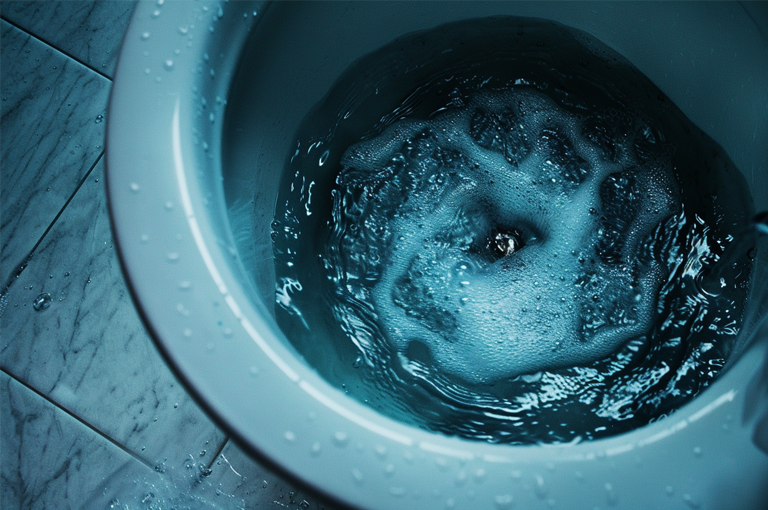
3.2 Infiltration Systems
3.2.1 Types of Infiltration Systems
Infiltration systems allow collected rainwater to percolate back into the ground, replenishing groundwater supplies and reducing surface runoff. Common types of infiltration systems include trenches, dry wells, and infiltration basins. These systems are designed to maximize the absorption of water into the soil, supporting groundwater recharge and maintaining the natural hydrological cycle.
3.2.2 Benefits and Environmental Impact of Underground Cisterns Infiltration Systems
Infiltration systems play a crucial role in managing stormwater by reducing surface runoff and preventing flooding. They also help in mitigating soil erosion and improving water quality by filtering pollutants through the soil. By replenishing groundwater supplies, infiltration systems contribute to the sustainability of local water resources.
Take Action with Yude Rain Eco
As the impacts of climate change continue to intensify, effective stormwater management has never been more critical. Whether you are a commercial property owner seeking to reduce operational costs and environmental footprint, or a homeowner aiming to conserve water and protect your property from flooding, rainwater harvesting systems offer a sustainable and practical solution. Yude Rain Eco is here to help you achieve these goals.
Why Choose Yude Rain Eco?
Yude Rain Eco specializes in providing comprehensive rainwater management solutions tailored to meet the unique needs of both commercial and residential clients. With our expertise in rainwater harvesting systems, we offer a range of services including the design, installation, and maintenance of efficient and sustainable water management systems.
Our Solutions:
Commercial Rainwater Harvesting Solutions: Large-scale systems designed to manage significant volumes of water, reduce reliance on municipal water supplies, and support sustainable business practices.
Residential Rainwater Harvesting Solutions: Affordable and efficient systems for individual households, providing alternative water sources for gardening, laundry, and more.
Underground Rain Harvesting Systems: Space-saving and aesthetically pleasing solutions that protect water quality and reduce stormwater runoff.
Underground Cisterns and Infiltration Systems: Durable and effective components that ensure the long-term sustainability of your rainwater management system.
Get Started Today
Taking the first step towards sustainable water management is easy with Yude Rain Eco. Our team of experts is ready to assist you with tailored solutions that meet your specific needs and environmental goals.
Contact Us: Reach out to our team for a consultation and discover how our rainwater harvesting solutions can benefit you.
Custom Solutions: We provide customized designs and installations to ensure maximum efficiency and effectiveness.
Ongoing Support: Our commitment to sustainability includes ongoing maintenance and support to keep your system running smoothly.
Join Us in Building a Sustainable Future
At Yude Rain Eco, we believe that every drop counts. By choosing our rainwater management solutions, you are not only protecting your property and reducing costs but also contributing to a sustainable future. Together, we can make a difference.
Contact Yude Rain Eco
Ready to take action? Visit our website or call us to learn more about our services and start your journey towards efficient and sustainable rainwater management.

